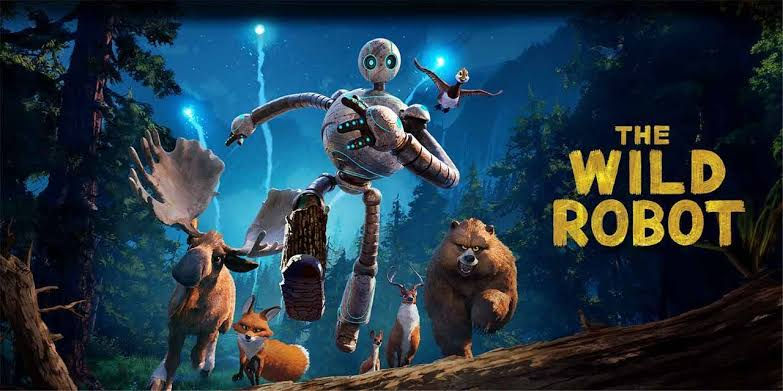
Movie Review: “Wild Robot” – A Heartwarming Tale of Survival, Growth, and Connection
- Filmeraa Studios

- Oct 20, 2024
- 3 min read
In a world where animated films often cater to larger-than-life adventures, Wild Robot stands out as a unique, deeply emotional journey that explores themes of survival, self-discovery, and the beauty of connection. Based on Peter Brown’s beloved novel, this adaptation combines stunning visuals, a poignant narrative, and unforgettable characters to deliver an unforgettable cinematic experience.
From the moment the story begins, we are introduced to Roz, a robot unlike any other, who finds herself stranded on a remote island after a shipwreck. With no understanding of the world she’s in, she must learn to adapt to her environment, not just for her own survival, but also to connect with the island’s wild inhabitants. What’s beautiful about Wild Robot is how it navigates Roz’s transformation—both externally as she learns to live in the wilderness and internally as she discovers her own sense of empathy and belonging.
The film’s animation is nothing short of breathtaking. From sweeping landscapes of dense forests to the intimate, detailed movements of its animal characters, every frame is a visual treat. The island feels alive, almost as if it’s a character itself, and the animals, despite their simplicity in design, are full of personality. The filmmakers have done an excellent job of capturing the essence of the novel’s descriptions, bringing the natural world to life in a way that feels both magical and grounded.
What truly makes Wild Robot shine, however, is its emotional depth. At its core, this is a story about relationships—between Roz and the wild animals, particularly her relationship with a young gosling she adopts. The evolving dynamic between them, and how Roz becomes an integral part of the animal community, is beautifully portrayed. Themes of compassion, friendship, and the idea that family can be found in the most unexpected places resonate strongly throughout the film.
The voice acting is superb, with Roz’s calm, measured tone contrasting with the lively voices of the animals she encounters. Each character feels fully realized, adding layers of emotion to the story. The dialogue is simple but meaningful, with moments of humor sprinkled in to keep the tone light amidst the heavier themes of survival and identity.
One of the film’s greatest strengths is its ability to explore the complexity of what it means to be “wild” and “robotic.” While Roz starts off as a machine designed for a specific purpose, her journey becomes a meditation on what it means to be alive, to feel, and to care for others. The film invites viewers to reflect on the intersection of technology and nature, and what it truly means to be human—or, in Roz’s case, more than just a machine.
Wild Robot is not just a film for children; it is a film for anyone who appreciates stories about growth, resilience, and the importance of connection. It’s a reminder that even in the wildest, most unexpected places, there is always room for kindness, and that sometimes, the most extraordinary beings are the ones that seem the least human.
In conclusion, Wild Robot is a visually stunning, emotionally resonant film that will leave audiences of all ages thinking long after the credits roll. It’s a rare gem that manages to blend heart, adventure, and meaning in a way that feels fresh and timeless. Whether you’re familiar with the source material or stepping into this world for the first time, Wild Robot is a must-watch—a film that will warm your heart and remind you of the strength of the connections we share with the world around us.
Rating: 4.5/5


Comments